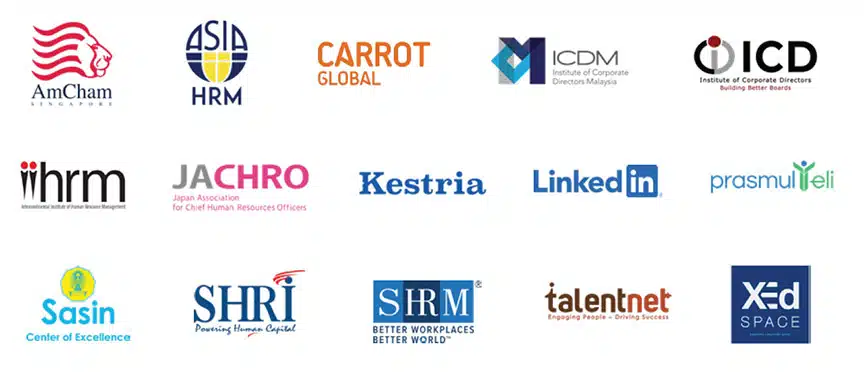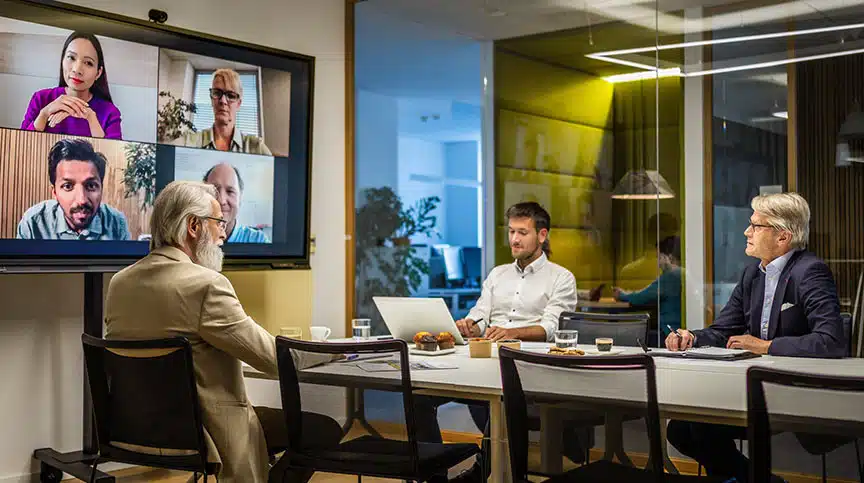How APAC Organizations Are Succeeding in the Work 3.0 Era
Since the pandemic, a massive evolution of work and workplaces has occurred. From most people working in physical offices pre-pandemic (Work 1.0), to most people working virtually during the pandemic (Work 2.0) — to now, with a focus on finding the “right” balance of in-person and remote in a new hybrid world (Work 3.0).
Not only are organizations and leaders struggling to keep up with the business and digital transformations that the Work 3.0 era requires, but the inability to keep up with people’s changing expectations has manifested in global trends like the “Great Resignation” and “Quiet Quitting” movements sweeping the world.
A major shift is fundamentally changing when, where, and how work occurs — and there’s no turning back now.
Leadership Success in Work 3.0
8 Keys for Leading in the Work 3.0 Era
Our Asia-Pacific (APAC) WORK 3.0 study identifies what leaders must know about the hybrid world. It separates myths from reality; illustrates how leaders must frame the “tensions” and polarities in the new work environment; and explains how they must transform themselves and their organizations for success in the new hybrid — or “Work 3.0” — era.
1. Employees want more from work.
Recent global disruption has caused stakeholders to expect more from corporations. Employees want more meaningful work, higher flexibility, and a better quality of life.
2. Hybrid, or Work 3.0, has emerged as the preferred model.
After being fully remote through the pandemic, most organizations are now testing to see what combination of on-site and remote works best for them. They’re working to balance flexibility for employees on the one hand, and productivity and efficiency on the other hand.
3. Organization context dictates viability and version of hybrid model.
Different versions of hybrid work for different organizations. Organization culture, type of work, leader level, leader age/generation, and national culture are some of the variables that dictate its viability.
4. Success in Work 3.0 centers on people and culture.
While technology is often celebrated as the biggest enabler of hybrid working, the success of the hybrid model actually hinges on people, teams, and organizational culture.
5. Leaders’ success depends on their mindsets and attributes.
Leaders must be dynamic and agile as they align their capabilities with Work 3.0 — and mindset shifts must precede skillset changes. These shifts mostly center on trust, communication, and growth.
6. Some leaders do much better than others.
Leaders’ comfort and success with Work 3.0 exists on a broad spectrum, with those who thrive in a hybrid world and champion flexibility and collaboration on one end, and those who are struggling to find their feet on the other end.
7. Team success in Work 3.0 hinges on 4 key elements.
For teams to deliver on business needs in a hybrid work environment, they must have core agreements about how people work together, collective mindset or team culture, cohesion or intra-team relationships, and connections across teams.
8. Leaders must also play 5 roles to make Work 3.0 a success.
Leaders must lean on their Work 3.0 mindsets and attributes to navigate the tensions inherent in hybrid work. In doing so, leaders must embrace 5 key roles that will dictate whether these tensions act as “springs” or “mines.”
Work 3.0 Requires a Culture Shift
Ultimately, leaders must work toward curating a human-centric culture that puts people at the center of their hybrid work strategy. Excelling in a hybrid work environment requires leaders to build cohesion among colleagues working together from disparate locations, fending off burnout, being intentional about inclusion, and strengthening shared culture.
Based on inputs from 2,200 leaders across 13 countries, our study on Work 3.0 represents more than 8 months of research led by our APAC research team, in partnership with 15 organizations in the region. With this study, we aim to help leaders examine the current status of their collective leadership and look at how they can amplify the longer-term positive impact of Work 3.0 on their organizations, communities, and the societies they serve.
Download the WORK 3.0 Research Report
Download this APAC research report now to learn more about the 8 keys to success when leading in the era of Work 3.0.











